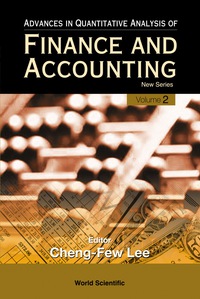Question
We have the following production model: logGSPt = 1 + 2logPublicKt + 3logPrivateKt + 4logLabort + t (1) where GSP is the gross product, KP
We have the following production model: logGSPt = 1 + 2logPublicKt + 3logPrivateKt + 4logLabort + t (1) where GSP is the gross product, KP is the capital stock of the public sector and PC is the capital stock of the private sector.
We have chronological data covering 17 years for two US States (A and B respectively). The OLS Regression 1 and Regression 2 results below show the estimates of model (1) for States A and B respectively. The regression results 3 show the estimate of the model (1) using the data of both states together in the same regression.
a. For Regression 1, check the assumption that the rates of capital in the public and private sectors are equal.
b. For Regression 1, test the hypothesis of fixed economies of scale, ie that the sum of the parameters of the three factors of production is equal to 1.
c. Use the Chow control to test the hypothesis that the coefficients of function (1) in the two states are equal. Show what calculations are made to get the result of the test. d. Suppose that from the theory it follows that the vectors of the parameters differ between the 2 states. Furthermore, it is obvious that since there are 2 observations for each period in the extended set of observations, these two observations are probably correlated. In this case the SUR model is suitable. Show using theory how to calculate the FGLS estimator in the SUR model of these 2 equations. How will these estimates differ from the estimates given by the two separate regressions?
Regression 1
+----------------------------------------------------+
| LHS=LOGGSP Mean = 10.53753 |
| Standard deviation = .1584103 |
| WTS=none Number of observs. = 17 |
| Model size Parameters = 4 |
| Degrees of freedom = 13 |
| Residuals Sum of squares = .9063141E-02 |
| Standard error of e = .2640388E-01 |
| Fit R-squared = .9774269 |
| Adjusted R-squared = .9722177 |
| Model test F[ 3, 13] (prob) = 187.64 (.0000) |
+----------------------------------------------------+
+--------+--------------+----------------+--------+--------+----------+
|Variable| Coefficient | Standard Error |t-ratio |P[|T|>t]| Mean of X|
+--------+--------------+----------------+--------+--------+----------+
Constant| 6.20005924 3.26548334 1.899 .0800
LOGKP | -1.11530796 .69214743 -1.611 .1311 9.79136043
LOGPC | .49706712 .25806357 1.926 .0762 10.8133466
LOGEMP | 1.38609118 .30315422 4.572 .0005 7.13004557
VARIANCE-COVARIANCE MATRIX Of COEFFICENTS
1 2 3 4
+--------------------------------------------------------
1| 10.66338 -2.24221 .68603 .54315
2| -2.24221 .47907 -.14467 -.12400
3| .68603 -.14467 .06660 .00145
4| .54315 -.12400 .00145 .09190
Regression 2
+----------------------------------------------------+
| LHS=LOGGSP Mean = 11.54882 |
| Standard deviation = .2287890 |
| WTS=none Number of observs. = 17 |
| Model size Parameters = 4 |
| Degrees of freedom = 13 |
| Residuals Sum of squares = .2267268E-02 |
| Standard error of e = .1320626E-01 |
| Fit R-squared = .9972928 |
| Adjusted R-squared = .9966681 |
| Model test F[ 3, 13] (prob) =1596.37 (.0000) |
+----------------------------------------------------+
+--------+--------------+----------------+--------+--------+----------+
|Variable| Coefficient | Standard Error |t-ratio |P[|T|>t]| Mean of X|
+--------+--------------+----------------+--------+--------+----------+
Constant| 1.81099728 1.00540552 1.801 .0949
LOGKP | .48580792 .28675566 1.694 .1140 10.5943058
LOGPC | -.24199469 .13905321 -1.740 .1054 11.3937222
LOGEMP | .91031345 .09078688 10.027 .0000 8.07221529
VARIANCE-COVARIANCE MATRIX Of COEFFICENTS
1 2 3 4
+--------------------------------------------------------
1| 1.01084 -.28472 .12393 .07353
2| -.28472 .08223 -.03730 -.02000
3| .12393 -.03730 .01934 .00631
4| .07353 -.02000 .00631 .00824
Step by Step Solution
There are 3 Steps involved in it
Step: 1

Get Instant Access to Expert-Tailored Solutions
See step-by-step solutions with expert insights and AI powered tools for academic success
Step: 2

Step: 3

Ace Your Homework with AI
Get the answers you need in no time with our AI-driven, step-by-step assistance
Get Started


